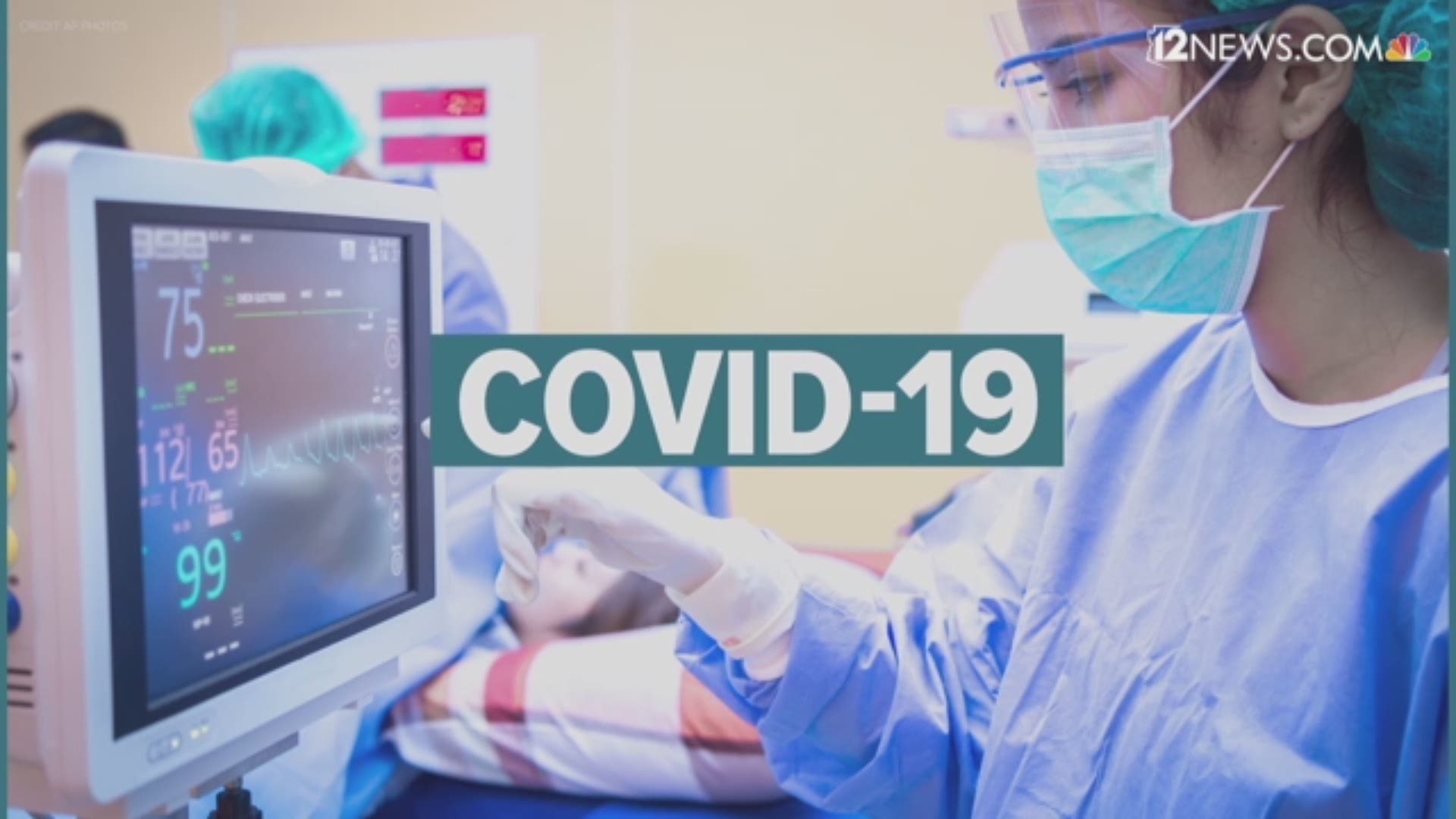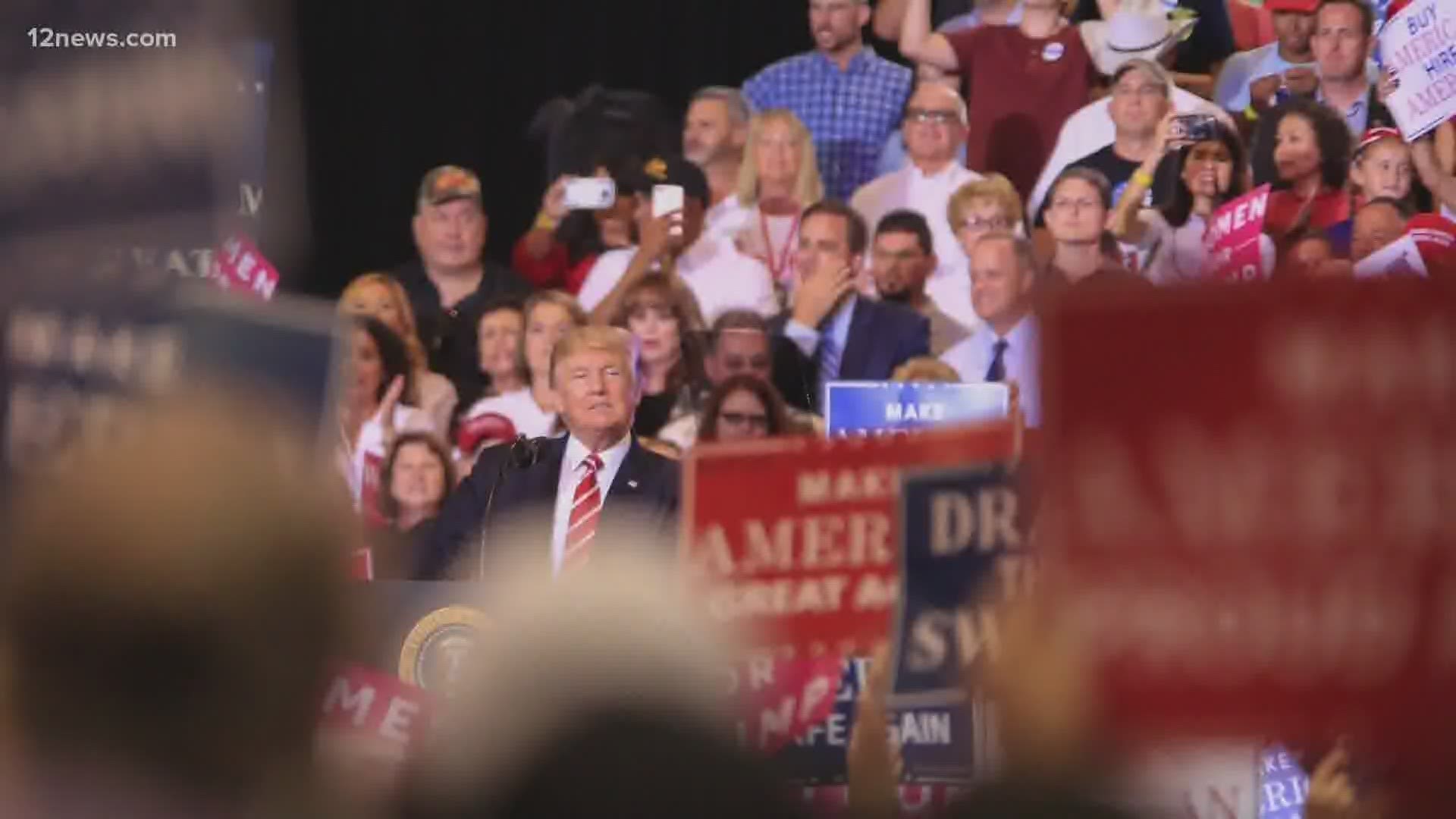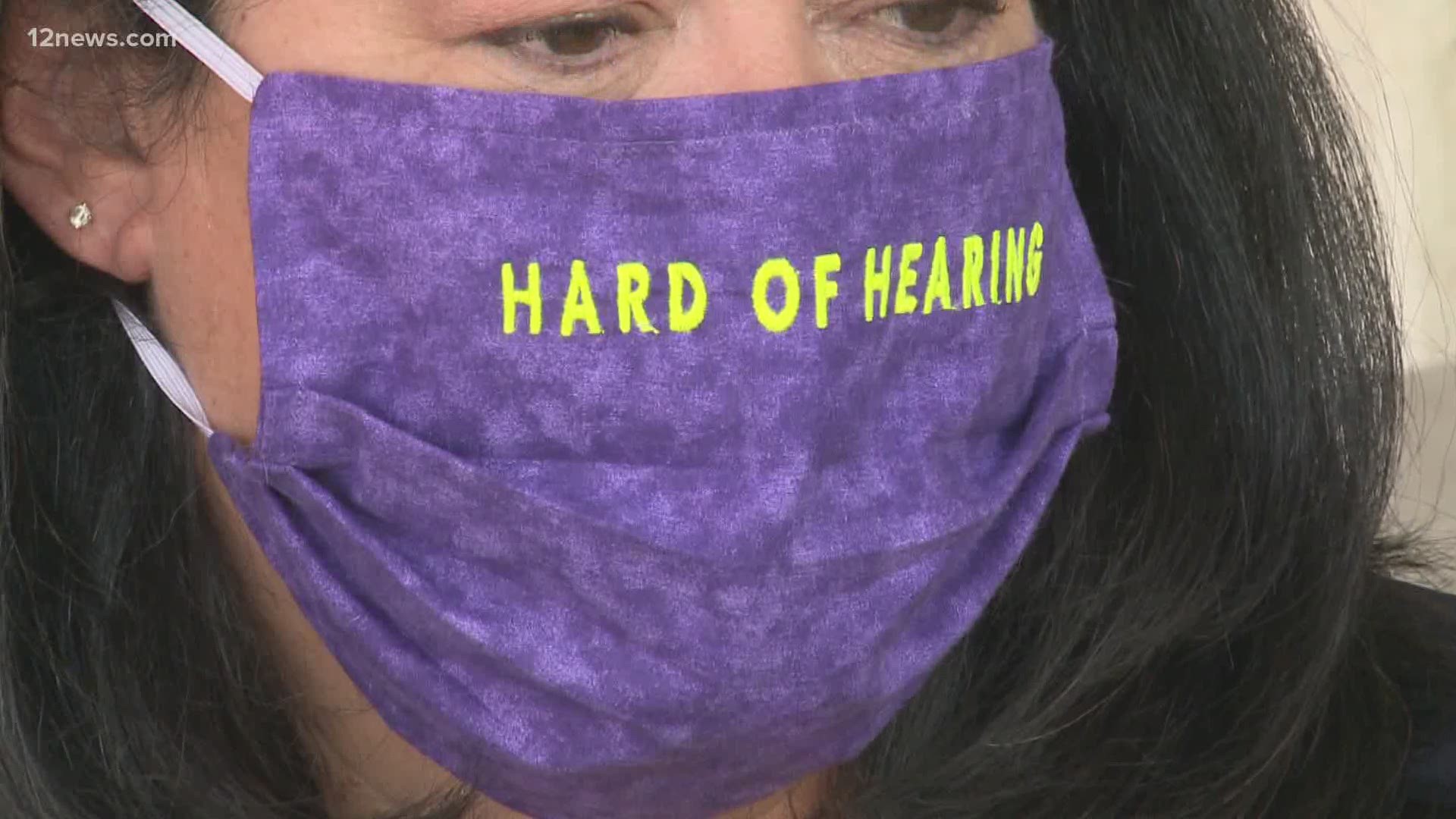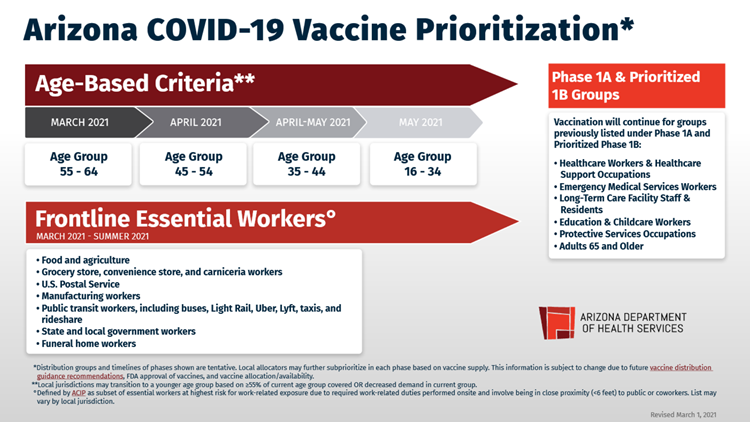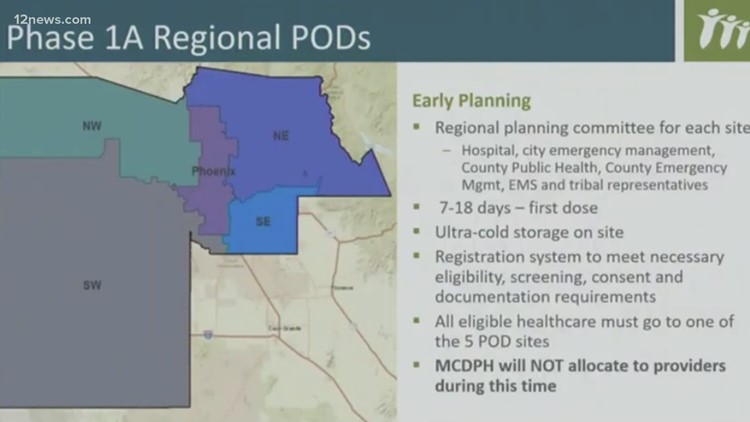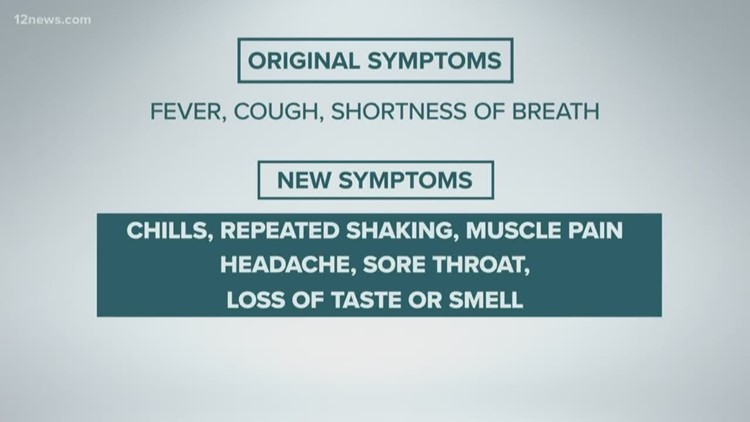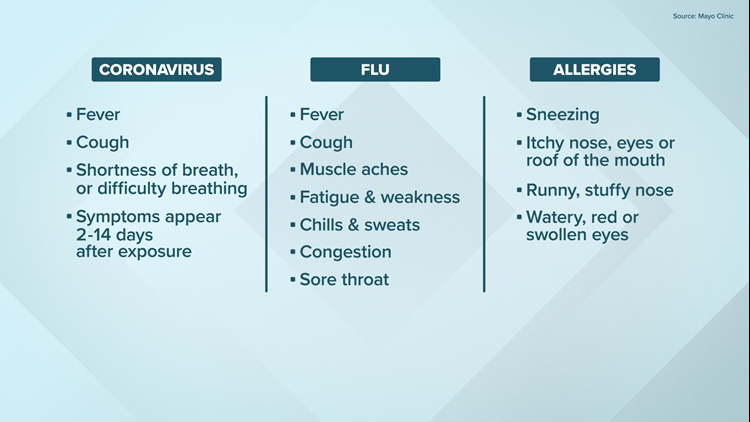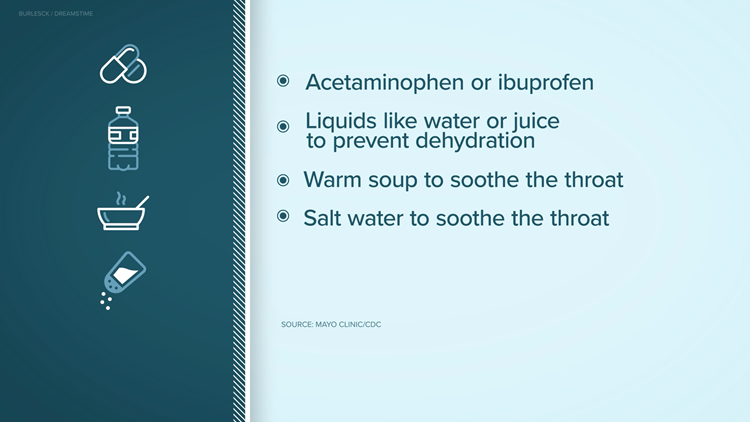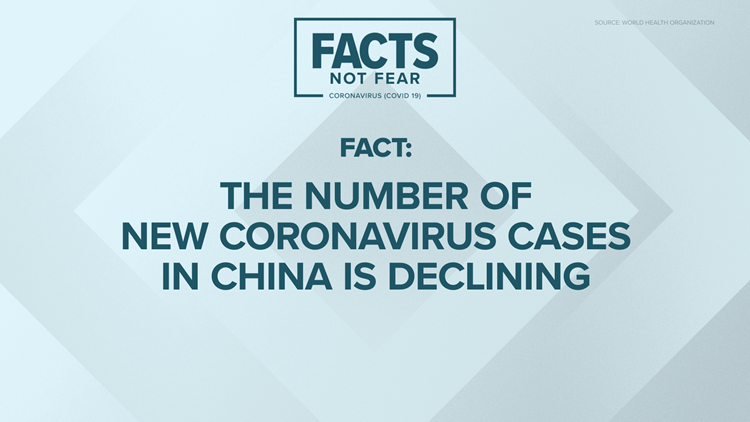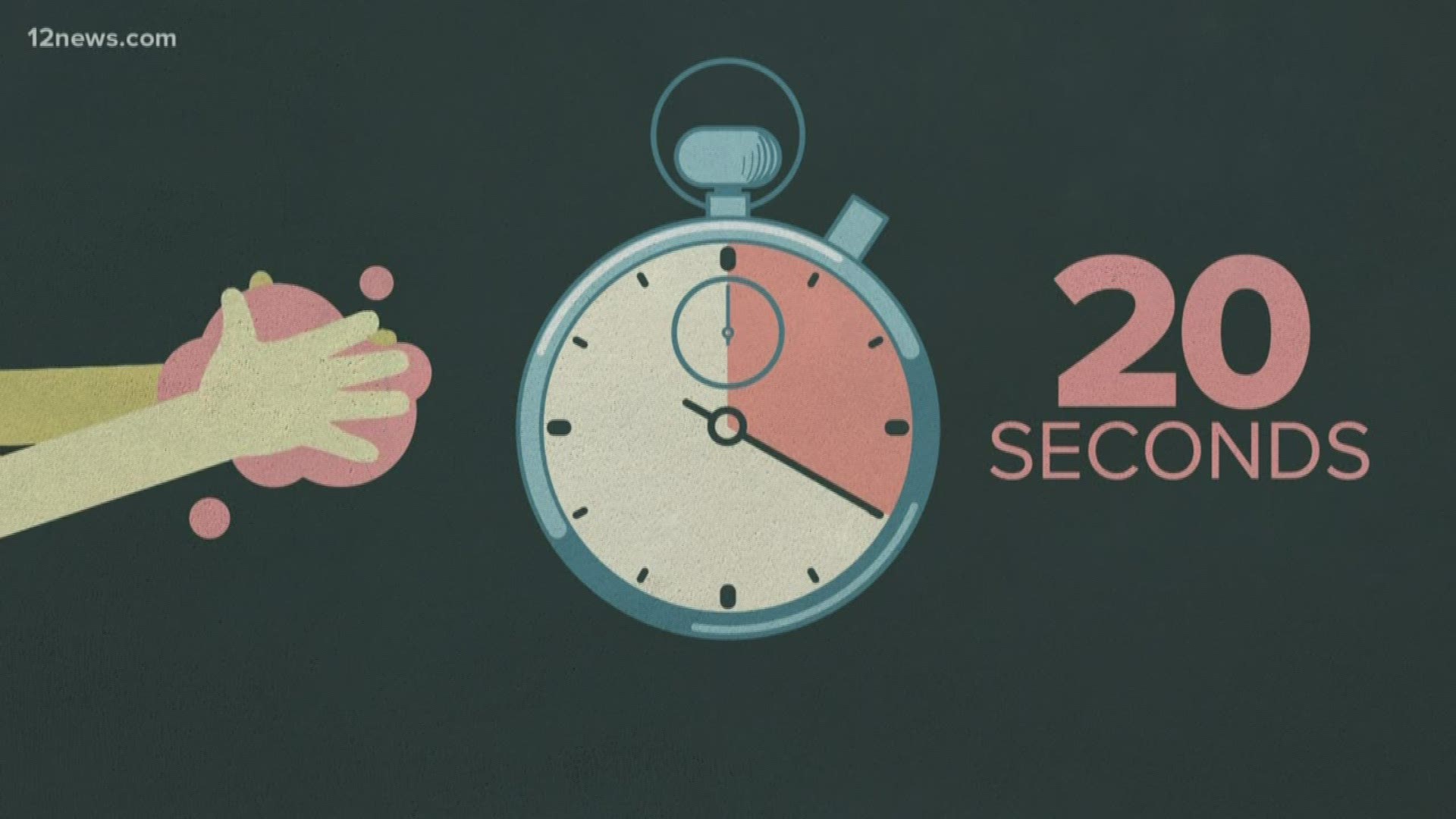The path towards reopening Arizona has started, but it will be gradual.
In an effort to track the changes, 12 News has started a daily live blog.
Here is the live blog for Tuesday, May 5.
Major updates:
- There are now 9,305 confirmed cases (20.37% increase over the average case numbers for the previous seven days) of coronavirus in Arizona as of Tuesday morning.
- 395 people have died from the virus or complications related to the virus in Arizona, as of Tuesday morning.
- The state does not record how many people have recovered.
- ADHS is pausing its prediction modeling of the pandemic
- Gov. Ducey announced Monday that barbers and salons can reopen Friday May 8 and dine-in restaurants can open Monday May 11.
- Arizona retail shops started to reopen Monday.
- Scroll down to see how many cases are in each ZIP code in Arizona.
Need to know:
-When is Arizona reopening? Frequently asked questions about COVID-19 restrictions
-Here's the national live blog for Tuesday, May 5
- Here’s how to get tested for coronavirus in Arizona
- Concern grows for people quarantined with abusers
There are now 9,305 confirmed cases of coronavirus in Arizona, 395 deaths
There are now 9,305 confirmed cases of coronavirus in Arizona with 395 coronavirus-related deaths, according to the state's latest numbers.
Cases are up from 8,919 confirmed cases on Monday with 362 coronavirus-related deaths.
One week ago, there were 6,948 cases and 293 deaths in Arizona.
Scroll down for more information.
ADHS pauses internal modeling
The Arizona Department of Health Services said it is pausing internal modeling of the COVID-19 outbreak. The state health department's computer predictions have been used to guide Arizona's disease response efforts.
Now, ADHS said it will be using FEMA's predictions to respond to the pandemic, as it is the most accurate of the national models available.
2 officers, 1 inmate test positive in Flagstaff jail
The Coconino County Detention Facility in Flagstaff has confirmed COVID-19 in two detention officers and an inmate as of Tuesday.
The first officer to show symptoms has been home sick since Wednesday, April 29. The second officer tested positive on the same day and is also recovering at home.
The inmate who tested positive was booked into the Coconino County Detention Facility on April 29. While in the booking area, the person complained of a cough and was isolated throughout the entire time in custody.
The facility has a 14-day quarantine in which all newly arrested people booked into the jail remain separated from the general population and are monitored for symptoms.
Havasupai extends tourism suspension
The Havasupai Tribal Council is extending the suspension of tourism until further notice.
If you booked a reservation during the time of the suspension, you will be contacted and given an opportunity to reschedule for the 2021 season.
The tribe prohibits reimbursing tourism fees for visiting permits, camping permits or pack mule services, so all tourists are encouraged to contact the tourism office to reschedule. You can find more information on the tribe's tourism website here.
Navajo Nation cases rise to 2,474 with 73 deaths
The Navajo Department of Health reported 101 new cases of COVID-19 for the Navajo Nation on Monday.
There are a total of 2,474 cases and 73 deaths in the Navajo Nation as of Monday.
A total of 14,351 COVID-19 tests have been administered with 9,254 negative test results as previously reported.
The Navajo Nation will have another 57-hour weekend curfew this upcoming weekend.
Navajo Nation to receive $600 million in COVID-19 funding
The United States Department of the Treasury stated that $600 million has been authorized for the Navajo Nation from Coronavirus Aid, Relief, and Economic Security (CARES) Act.
The $600 million is part of the first distribution of relief funding to tribal nations from the act.
“After non-stop consultation between the Navajo Nation and Council Delegates, the federal government has provided a lifeline for our People that will be put to immediate use in our efforts to stop the spread of COVID-19," Seth Damon, Navajo Nation Council Speaker said.
Ak-Chin Indian Community, other tribes sue Treasury Department
The Ak-Chin Indian Community and other tribes have filed a lawsuit against the U.S. Treasury Department.
They are seeking a federal court order to release $8 billion in promised but overdue COVID-19 relief funding.
The money was allotted as part of the federal Coronavirus Aid, Relief, and Economic Security Act, otherwise known as CARES Act, to help native tribes respond to the COVID-19 crisis.
The legislation mandated the U.S. Treasury Department disburse the funds no later than April 26, 2020.
“All that we ask is for the timely release of federal relief aid that was promised so that the Ak-Chin Indian Community and other Tribal governments may respond to this unprecedented crisis,” said Ak-Chin Chairman Robert Miguel.
“Indian Country has suffered disproportionately under this pandemic. As with other tribes, we’ve declared an emergency and closed tribal businesses and gaming enterprises in order to mitigate the outbreak. Without swift federal assistance, we will have no choice but to furlough tribal employees and make cuts to essential services our people depend upon."
Navajo Nation announced later Tuesday that the Departments of the Treasury and the Interior said it would distribute $4.8 billion among all tribal governments.
The Navajo Nation Council is set to introduce legislation to accept and manage expenditures for COVID-19 response activities, in-line with federal law and as-required by the Navajo Nation Code.
“The Navajo Nation Council appreciates this first distribution to tribal governments of CARES Act Coronavirus Relief Fund support,” said 24th Navajo Nation Council Speaker Seth Damon.
“We, as Navajo leaders, have been listening to the needs of the Navajo People and our communities, and we will ensure that necessary funds are equitably and responsibly allocated within the time given to us.”
The first distribution of tribal funding comes amid a lawsuit by a group of Tribal nations brought against the Treasury.
After missing the statutory deadline to issue the funding to tribal governments, the Treasury and Interior Departments said it would begin distribution of 60% of the fund.
The remaining 40% will be distributed at a later date.
Southern Arizona hospital to get $3.6M in pandemic aid
The state of Arizona has agreed to give $3.6 million in crisis money to the only hospital in Green Valley after the coronavirus pandemic threatened the facility’s future.
Santa Cruz Valley Regional Hospital CEO Kelly Adams says the hospital has already received more than $1 million under a deal with the state with another account has been set up to receive a second $1 million payment.
Two more payments are scheduled under the new contract.
The hospital has agreed to the contract under multiple conditions including staying open 24 hours a day, seven days a week, no payments to owners or shareholders and a 20% pay cut for executives.
The Associated Press contributed to this report.
Opening dates set for barbershops, salons, dine-in restaurants
Friday May 8, barbers and salons may reopen. There will be reduced capacity and occupancy and enhanced sanitation protocols as well as physical distancing.
Monday May 11, dine-in services will reopen. There will be physical distancing inside these establishments. There will be more to follow on this, Ducey said, but they will have this week to prepare their dine-in openings.
Ducey announced the state is still working with the fitness industry and more will come on that.
President Trump to visit Arizona
President Donald Trump will visit a Honeywell facility in Phoenix on Tuesday, May 5, the White House confirmed.
Honeywell added manufacturing capabilities in Phoenix to produce N-95 face masks in support of the U.S. government’s response to the coronavirus, COVID-19, the company announced at the end of March.
The event will not be open to the public.
Arizona releases ZIP code locations of coronavirus cases, other data
The Arizona Department of Health Services has released expanded data points regarding coronavirus cases in the state.
The AZDHS website now features the location of confirmed cases in Arizona by zip code.
You can see the current ZIP code map below and can find yours by clicking around or searching for your ZIP code in the top right of the map.
More information on coronavirus cases from Tuesday
There are 9,305 cases and 395 deaths in Arizona as of Tuesday.
That's an increase of 386 new cases reported since Monday and 33 new reported deaths.
In total 3,007 new tests were reported Tuesday. There has been a total of 88,260 tests reported to the state as of Tuesday.
Eight percent of those tests have been positive.
Here's a county breakdown:
- Maricopa: 4,929
- Pima: 1,379
- Pinal: 478
- Coconino: 561
- Navajo: 869
- Apache: 576
- Mohave: 147
- La Paz: 16
- Yuma: 115
- Graham: 19
- Cochise: 39
- Santa Cruz: 35
- Yavapai: 126
- Gila: 14
- Greenlee: 2
Click on the links below to find more information from each county's health department:
COVID-19 is believed to be primarily spread through coughs or sneezes.
It may be possible for the virus to spread by touching a surface or object with the virus and then a person touching their mouth, nose or eyes, but this is not thought to be the main method of spread, the CDC says.
You should consult your doctor if you traveled to an area currently affected by COVID-19 and feel sick with fever, cough or difficulty breathing.
There is no vaccine for the coronavirus, so the best way to prevent COVID-19 and other respiratory diseases is to:
- Avoid close contact with people who are sick.
- Avoid touching your eyes, nose, and mouth.
- Stay home when you are sick.
- Cover your cough or sneeze with a tissue, then throw the tissue in the trash.
- Clean and disinfect frequently-touched objects and surfaces using a regular household cleaning spray or wipe.
- Wash your hands often with soap and water for at least 20 seconds. If soap and water are not readily available, use an alcohol-based hand sanitizer.
You can text FACTS to 602-444-1212 to receive more information on the coronavirus and to ask questions.

